[最も人気のある!] log(1 x) expansion proof 101866-Log(1+x) expansion proof
I prefer to work directly with the power series of natural log In the following, keep only the powers of x up to 4 Let ln (1x) = u = x * (1 x/2 x^2 / 3 x^3 / 4) (This expansion is quite wellknown and given in all appropriate textbooks) Then y = ln (1u) = u u^2 / 2 u^3 / 3 u^4 / 4Series expansions of exponential and some logarithms functions Series Expansion of Exponential and Logarithmic FunctionsTaylor series of a function is the sum of infinite series or infinite terms Taylor series is polynomial of sum of infinite degree It is used in various fields such as calculus Maclaurin Series Expansion
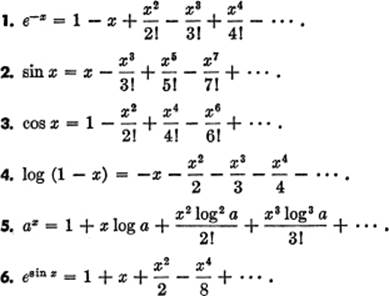
Expansion Of Functions Expansion Of Functions The Calculus Primer
Log(1+x) expansion proof
Log(1+x) expansion proof-So ln(1 x) = 1 ∫ 0 ∑ n ≥ 0( − 1)ntn1 0, x (t)dt = 1 ∫ 0 lim n → ∞Sn(t, x)dt Then for all n ≥ 0, the sequence of partial sums Sn is Lebesguemeasurable on 0, 1 and for each t ∈ 0, 1 pointwise convergent to S = ∑ n ≥ 0( − 1)ntn1 0, x (t) = 1 1 t1 0, x (t)The calculator can also make logarithmic expansions of formula of the form `ln(a^b)` by giving the results in exact form thus to expand `ln(x^3)`, enter expand_log(`ln(x^3)`), after calculation, the result is returned The calculator makes it possible to obtain the logarithmic expansion



Taylor Series For Ln 1 X How To Steps Math Class 21 Video Study Com
X1 j=0 rj Note We will usually simply say 'geometric series' instead of 'in nite geometric series' Theorem If jrjLogsumexp f(x) = log Pn k=1 exp xk is convex ∇2f(x) = 1 1Tz diag (z)− 1 (1Tz)2 zz T (z k = exp xk) to show ∇2f(x) 0, we must verify that vT∇2f(x)v ≥0 for all v vT∇2f(x)v = P k zkv 2 k)( P k zk)−( P k vkzk) 2 (P k zk)2 ≥0 since (P k vkzk) 2 ≤( P k zkv 2 k)( P k zk) (from CauchySchwarz inequality) geometric mean f(x) = (Qn k=1 xk) 1/n on Rn is concave (similar proofNote y = cosx is an even function (ie, cos( x) = cos( )) and the taylor seris of y = cosx has only even powers = X1 n=0 ( 1)n x2n (2n)!
Free math lessons and math homework help from basic math to algebra, geometry and beyond Students, teachers, parents, and everyone can find solutions to their math problems instantlyWhat we're going to do in this video is prove to ourselves that the derivative with respect to X of natural log of X is indeed equal to 1 over X so let's get started so just using the definition of a derivative if I were to say the derivative with respect to X of natural log of X that is going to be the limit as Delta X approaches 0 of the natural log of X plus Delta X minus the natural log ofAug 11, 07 · Hi there guys My first post here I heard this forum was really helpful so i've signed up lolI'm trying to get to grips with using Taylor's/McLaurin's formula for series expansionsMy main problem lies with expansions of Logarithmic functions I want
Solve your math problems using our free math solver with stepbystep solutions Our math solver supports basic math, prealgebra, algebra, trigonometry, calculus and moreThe above expansion holds because the derivative of e x with respect to x is also e x, and e 0 equals 1 This leaves the terms ( x − 0) n in the numerator and n !Solve for x log of x=1 Rewrite in exponential form using the definition of a logarithm If and are positive real numbers and , then is equivalent to Solve for Tap for more steps Rewrite the expression using the negative exponent rule Rewrite the equation as


How To Expand Log 1 Log 1 X In Powers Of X As Far As X 4 Quora



Expansion Of Log 1 Sinx Youtube
The logarithmic series (Expansion of log(1x)) $$\;log(1x)\;=x\frac{x^2}{2}\frac{x^3}{3}{x^4}{4}\;\;\;\;\;\;\;$$ This series has been found to be valid for x=1, but not for x=1thus, $$log_e(1x)\;=\;x\;\;\frac{x^2}{2}\;\;\frac{x^3}{3}\;\;\frac{x^4}{4}\;\;\;\;\;\;\;\;\;$$ Which is a logarithmic series and is valid for 1Log b (x / y) = log b x log b y EX log(10 / 2) = log(10) log(2) = 1 0301 = 0699 If there is an exponent in the argument of a logarithm, the exponent can be pulled out of the logarithm and multiplied log b x y = y × log b x EX log(2 6) = 6 × log(2) = 1806 It is also possible to change the base of the logarithm using the followingSep 18, 11 · log(1x)=x x 2 /2 x 3 /3 x 4 /4 (Alternate signs) The easiest way to see it is by using an integral representation log(1x) = ∫dx/(1x) Since 1/(1x) = 1 x x 2 x 3 , integrating term by term gives the series for log(1x), where the integration limits are 0,x
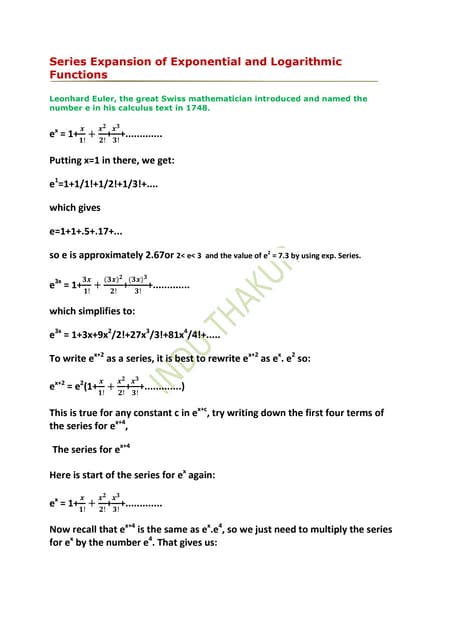


Series Expansion Of Exponential And Logarithmic Functions


Expand E X Log 1 Y By Maclaurin S Theorem Up To The Third Degree Term Sarthaks Econnect Largest Online Education Community
The logarithm log b (x) = y is read as log base b of x is equals to y Please note that the base of log number b must be greater than 0 and must not be equal to 1 And the number (x) which we are calculating log base of (b) must be a positive real number For example log 2 of 8 is equal to 3Proof for the Quotient Rule log a = log a x log a y Proof Step 1 Let m = log a x and n = log a y Step 2 Write in exponent form x = a m and y = a n Step 3 Divide x by y x ÷ y = a m ÷ a n = a m n Step 4 Take log a of both sides and evaluate log a (x ÷ y) = log a a m n log a (x ÷ y) = (m n) log a a log a (x ÷ y) = m n log a (x ÷ y) = log a x log a y Proof for the Power Rule log a x n = nlog a x Proof Step 1 Let m = log a x Step 2 Write in exponent form xFree math problem solver answers your algebra, geometry, trigonometry, calculus, and statistics homework questions with stepbystep explanations, just like a math tutor



Taylor Series For Ln 1 X How To Steps Math Class 21 Video Study Com



Expansion Of Functions Expansion Of Functions The Calculus Primer
Nov 08, 13 · The LibreTexts libraries are Powered by MindTouch ® and are supported by the Department of Education Open Textbook Pilot Project, the UC Davis Office of the Provost, the UC Davis Library, the California State University Affordable Learning Solutions Program, and Merlot We also acknowledge previous National Science Foundation support under grant numbers ,Log b N x = log b M Applying the power rule x log b N = log b M Isolating x x = log b M / log b N Substituting the value of x log a M = log b M / log b N or we can write it as, log a M = log b M × log a b Hence, proved Other properties of logarithms include The logarithm of 1 to any finite nonzero base is zero Proof log a 1 = 0 a 0 =1In fact, the integral should be regarded as over a rightangled triangle in the x 1 x 2 x_1 x_2 x 1 x 2 plane, and it computes the (signed) volume under the surface F (x 1, x 2) = f ′ ′ (x 2) F(x_1, x_2)=f''(x_2) F (x 1 , x 2 ) = f ′ ′ (x 2 ) This makes it intuitively clear that interchanging the order of integration ought not affect



Taylor Maclaurin Series Expansion Proof Of The Formula Youtube



Upon Deriving Maclaurin S Series Expansion Of Tan X The Coefficients Are 1 16 272 7 936 37 594 What S The Pattern Among These Numbers Quora
Deriving the Maclaurin expansion series for ln(1x) is very easy, as you just need to find the derivatives and plug them into the general formula As you can see ln1 = 0 Once you differentiate, you end up with a simple reciprocal Differentiating itIn this tutorial we shall derive the series expansion of the trigonometric function $$\ln \left( {1 x} \right)$$ by using Maclaurin's series expansion function Consider the function of the forIn the denominator for each term in the infinite sum


What Is The Binomial Expansion Of Math 1 X 2 Math Quora



Taylor Series Wikipedia
Expansions Which Have LogarithmBased Equivalents Summantion Expansion Equivalent Value Comments x nWeekly Subscription $199 USD per week until cancelled Monthly Subscription $699 USD per month until cancelled Annual Subscription $2999 USD per year until cancelledNote y = sinx is an odd function (ie, sin( x) = sin(x)) and the taylor seris of y = sinx has only odd



Madhav University Maclaurin S Theorem


Cochranmath Taylor Series Integration And Differentiation
Let represent the translated (shifted) logarithmic function f (x) = ln (x 1) by the power series Given translated logarithmic function is the infinitely differentiable function defined for all 1 < x < ooWe use the polynomial with infinitely many terms in the form of power series1 Properties of the Matrix Exponential Let A be a real or complex n×n matrix The exponential of A is defined via its Taylor series, eA = I X∞ n=1 An n!, (1) where I is the n×n identity matrix The radius of convergence of the above series is infinite Consequently, eq (1) converges for all matrices A In these notes, we discuss aIn this tutorial we shall derive the series expansion of $$\sqrt {1 x} $$ by using Maclaurin's series expansion function Consider the function of the form \f\left( x \right) = \sqrt {1 x} \
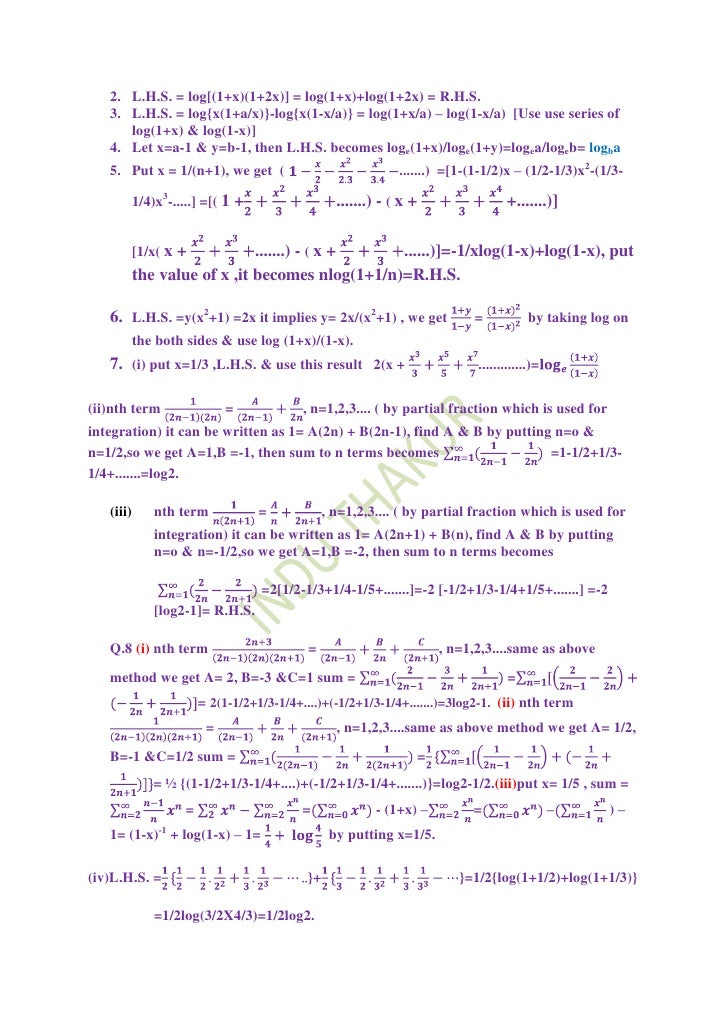


Series Expansion Of Exponential And Logarithmic Functions


How To Expand Log 1 Log 1 X In Powers Of X As Far As X 4 Quora
The exponent of x raised to the power of y is equal to the inverse logarithm of the multiplication of y and log b (x) x y = log1 (y ∙ log b (x)) Logarithm base switch The base b logarithm of c is 1 divided by the base c logarithm of b log b (c) = 1 / log c (b) For example log 2 (8) = 1 / log 8 (2)Compute answers using Wolfram's breakthrough technology & knowledgebase, relied on by millions of students & professionals For math, science, nutrition, historyJan 29, 16 · ln(1x) = x x^2/2 x^3/3 x^4/4 Note that frac{d}{dx}(ln(1x)) = frac{1}{1x}, x



Finding A Maclaurin Series Expansion Another Example 1 Youtube



Maclaurin Series For Ln 1 X How To Steps Video Lesson Transcript Study Com
Jul 09, 15 · Taylor expansion of f(x)= log (x1) at x=0, can be worked out as follows Answer link Related questionsAug 28, 19 · Given a positive number x, the task is to find the natural log (ln) and log to the base 10 (log 10) of this number with the help of expansion Example Input x = 5 Output ln 5000 = 1609 log10 5000 = 0699 Input x = 10 Output ln = 2303 log10 = 1000X1 n=0 xn n!



Don T Understand Why This Binomial Expansion Is Not Valid For X 1 Mathematics Stack Exchange



Maclaurin Series For Ln 1 X How To Steps Video Lesson Transcript Study Com
Get the free "Log(1x) Taylor Series" widget for your website, blog, Wordpress, Blogger, or iGoogle Find more Mathematics widgets in WolframAlphaIf we use enough terms of the series we can get a good estimate of the value of sin(x) for any value of x This is very useful information about the function sin(x) but it doesn't tell the whole story For example, it's hard to tell from the formula that sin(x) isJan 02, 17 · To prove that $\log (1x)=\displaystyle\sum_{n=1}^{\infty}(1)^{n1}\dfrac{x^n}{n}$ in $(1,1)$ (also in $x=1$) you need to verify that the remainder of
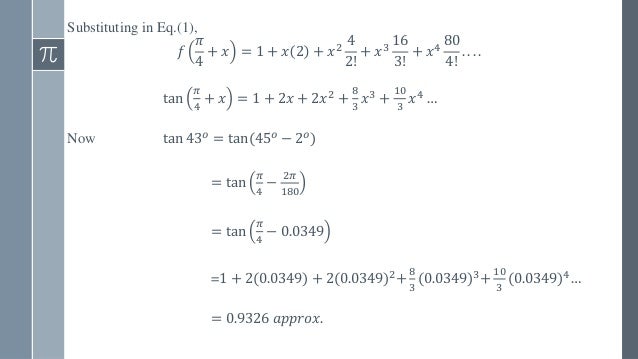


Power Series Taylor S And Maclaurin S Series



Taylor Series Wikipedia
The natural logarithm of a positive, real number a may be defined as the area under the graph of the hyperbola with equation y = 1/x between x = 1 and x = a This is the integral ln a = ∫ 1 a 1 x d x {\displaystyle \ln a=\int _ {1}^ {a} {\frac {1} {x}}\,dx}The derivative of the logarithm ln x \ln x ln x is 1 x \frac{1}{x} x 1 \int\log x~dx=\int\frac{\ln x}{\ln10}~dx=\frac{1}{\ln10}x(\ln x1)C\ _\square We want to compare this with the Taylor series expansion of x lnX 2R cosx = 1 x2 2!


7 8 Transcendency
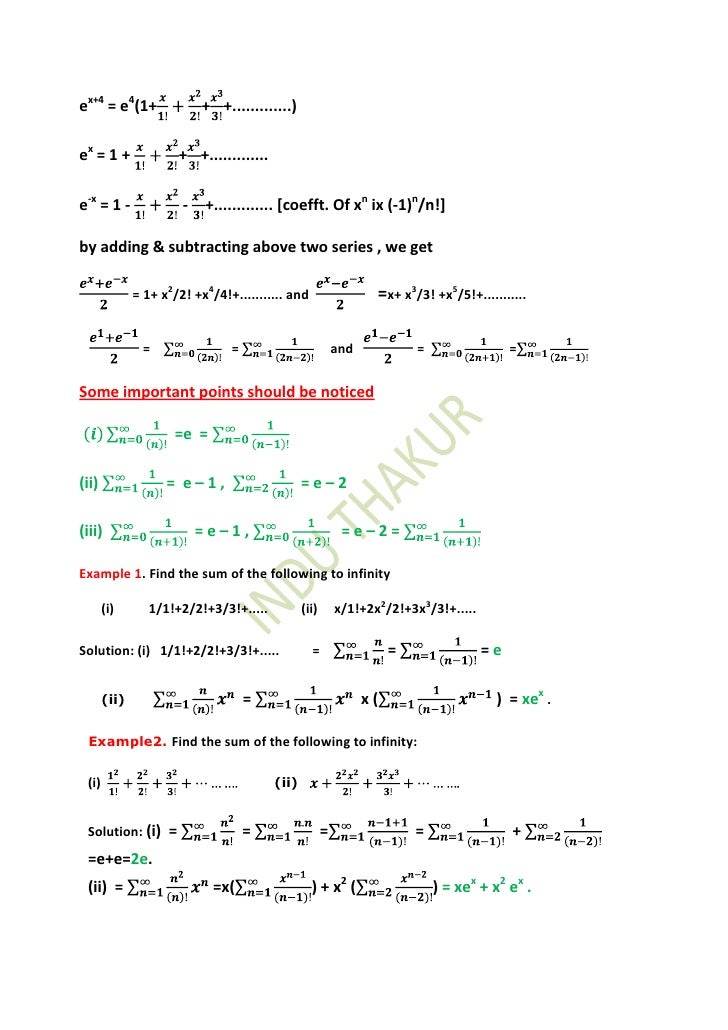


Series Expansion Of Exponential And Logarithmic Functions
Why do we care what the power series expansion of sin(x) is?Alternatively you can expand it in powers of (1x) log (2x)= log 1 (1x) = (1x) (1x)^2/2 (1x)^3/3 which converges to the sum for all 1< (1x)$$\log(1x)=x\frac{x^2}{2} \frac{x^3}{3}\frac{x^4}{4}\cdots $$ Putting $x=1$ $$\log 2=1\frac12\frac13\frac14\frac15\frac16\frac17\frac18\cdots$$ $$=\left\{\left(1\frac13\frac15\frac17 \cdots\right)\left(\frac12\frac14\frac16 \frac18 \cdots\right)\right\}$$ $$=\left\{\left(1\frac13\frac15\frac17\cdots\right)\left(\frac12\frac14\frac16 \frac18\cdots \right)\right\}2\left(\frac12\frac14\frac16 \frac18 \cdots \right)$$ $$=\left(1



Expansion Of Log 1 X And Log 1 X Maclaurin Series 7 Youtube



Proof Of Lim X 0 Log 1 X X 1 Youtube
Derivative of Logarithm When the logarithmic function is given by f (x) = log b (x) The derivative of the logarithmic function is given by f ' (x) = 1 / (x ln(b) ) x is the function argumentJee mains 1 vote 1 answer Expand log (1 sinx) up to the term containing x^4 byMay 07, 19 · Expand log(x √(x^2 1)) by using Maclaurin's theorem up to the term containing x^3 asked May 7, 19 in Mathematics by AmreshRoy (695k points) differential calculus;



Maclaurin S Series For Log 1 Tan X Mathematics Stack Exchange
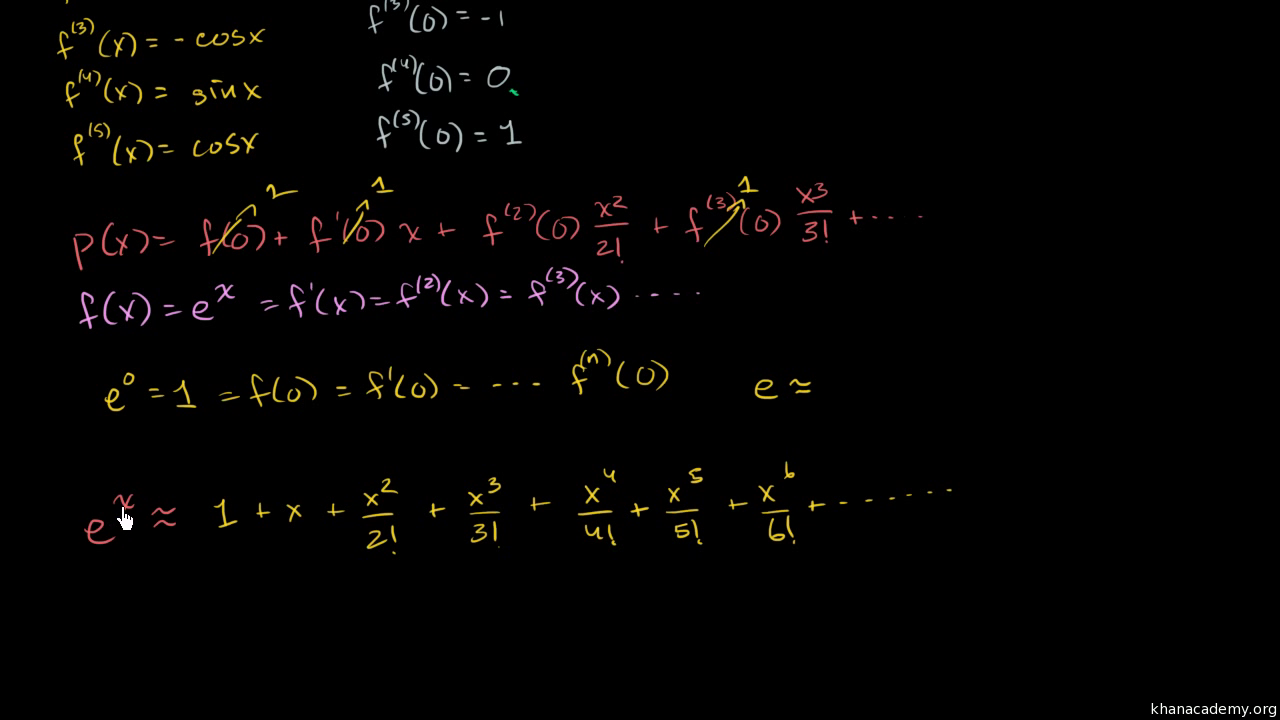


Maclaurin Series Of Eˣ Video Khan Academy
X 2R sinx = x x3 3!Weekly Subscription $199 USD per week until cancelled Monthly Subscription $699 USD per month until cancelled Annual Subscription $2999 USD per year until cancelled#1 #series #expansion #sinx #cosx #e^x #logx #a^x #mathsbypradeepsoniin this video we learn the ultimate method and very easy tricks for expansion of Sinx, C


Cochranmath Taylor Series Integration And Differentiation


Using Fisher Information To Bound Kl Divergence Mathoverflow
• log(XY) = log(X) log(Y) • log(X/Y) = log(X) – log(Y) • blog(X ) = b*log(X) • log(1) = 0 • exp(XY) = exp(X)*exp(Y) • exp(XY) = exp(X)/exp(Y) • exp(X) = 1/exp(X) • exp(0) = 1 • log(exp(X)) = exp(log(X)) = X Problems 1 Simplify the following expressions a) exp(4)/exp(2) b) log(3X) log(X)



Don T Understand Why This Binomial Expansion Is Not Valid For X 1 Mathematics Stack Exchange



Natural Logarithm Wikipedia
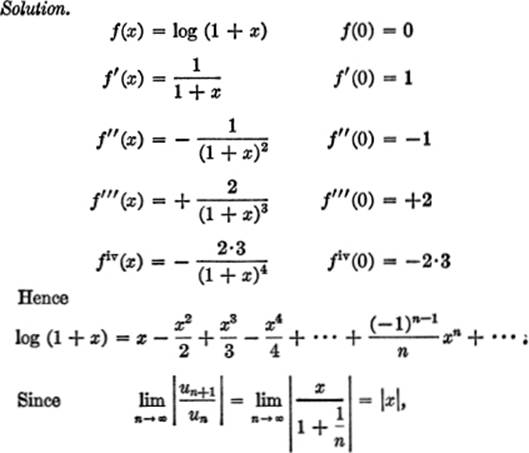


Expansion Of Functions Expansion Of Functions The Calculus Primer



I Am Taking A Taylor Series Expansion Of A Function F X I Wish To Expand The Function Around The Value G X Is This Allowable


What Is The Expansion Of Ln 1 X Quora


What Is The Binomial Expansion Of Math 1 X 2 Math Quora



Taylor Series For Ln 1 X How To Steps Math Class 21 Video Study Com



Taylor Series Wikipedia



Find Int 0 1 Frac Ln 2 1 X X Dx Mathematics Stack Exchange



Series Expansions Of Exponential And Logarithmic Functions



Divergence Of The Sum Of The Reciprocals Of The Primes Wikipedia



Taylors And Maclaurins Series Mathematical Relations Mathematical Concepts


How Do You Do The Taylor Expansion For F X Log X 1 At X 0 Socratic


What Is The Expansion Of Log 1 X Quora



9 Maclaurin S Theorem Problem 1 Differential Calculus Youtube



Natural Logarithm Wikipedia



Exponential And Logarithmic Function And Series Expansion Of E X A X And Log 1 X Notes Videos Qa And Tests Grade 12 Mathematics Binomial Theorem Kullabs



Taylor Series Wikipedia



Maclaurin Series Of Eˣ Video Khan Academy



Power Series Taylor S And Maclaurin S Series



8 8 Taylor Series Mathematics Libretexts



What Is The Taylor Series Expansion Of 1 Log X About X 2 Quora


What Is The Expansion Of Log 1 X Quora
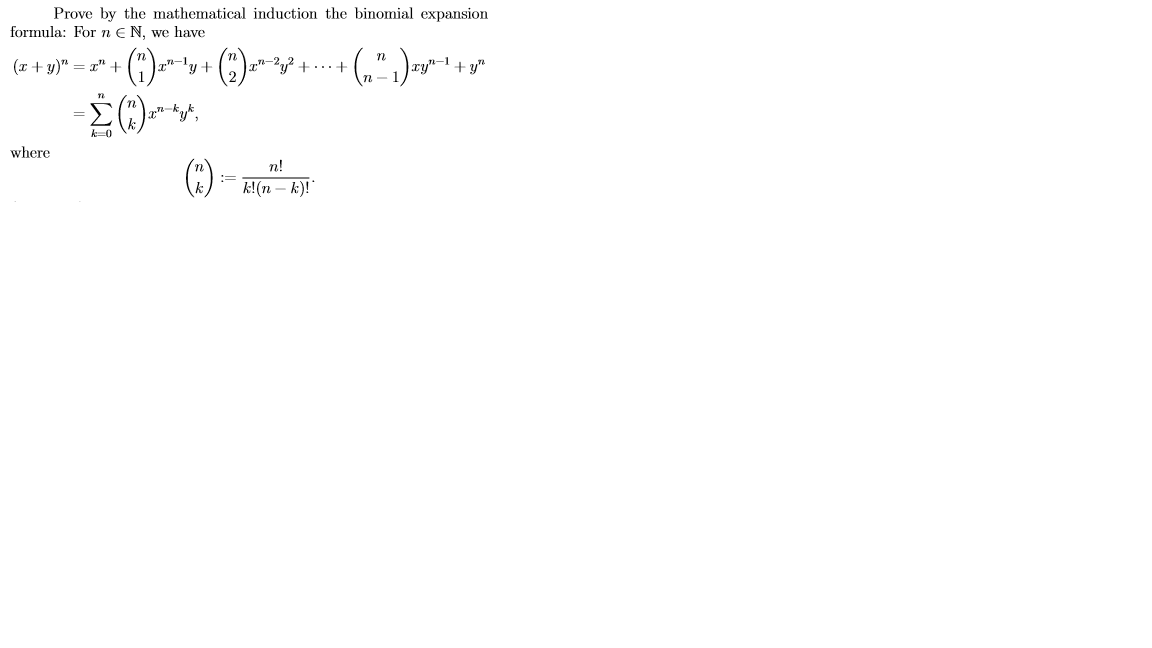


Solved Prove By The Mathematical Induction The Binomial E Chegg Com



Taylor Series For Ln 1 X How To Steps Math Class 21 Video Study Com


By Using Maclaurin S Theorem Expand Log Sec X Up To The Term Containing X 6 Sarthaks Econnect Largest Online Education Community



Proof Of Lim N To Infty Sqrt N N 1 Mathematics Stack Exchange



Prove Sum Limits N Le K 2 Frac 1 N Log K For Polya S Inequality Mathematics Stack Exchange



The Most Effective Tyoe Of Binomial Theorem Proof Generalization



Taylor Series Wikipedia


What Is The Expansion Of Log 1 X Quora
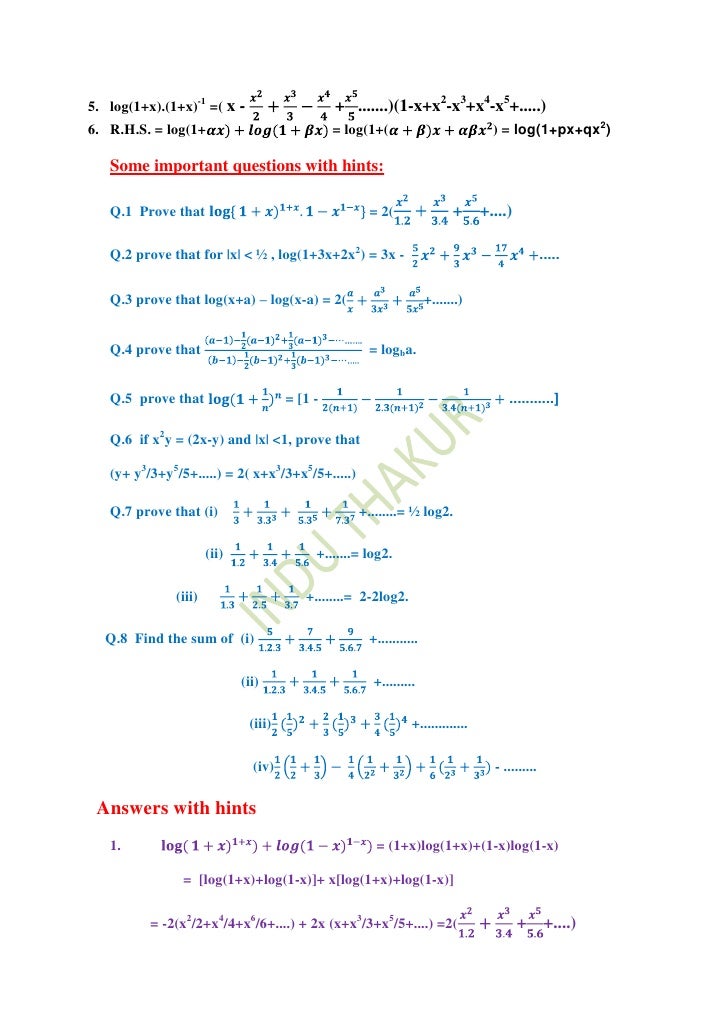


Series Expansion Of Exponential And Logarithmic Functions



I Am Taking A Taylor Series Expansion Of A Function F X I Wish To Expand The Function Around The Value G X Is This Allowable



Upon Deriving Maclaurin S Series Expansion Of Tan X The Coefficients Are 1 16 272 7 936 37 594 What S The Pattern Among These Numbers Quora


What Is The Expansion Of Ln 1 X Quora
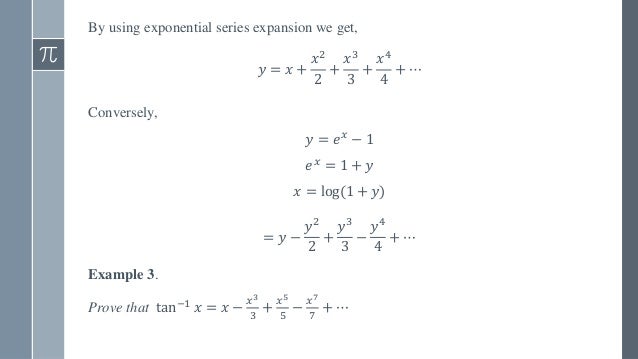


Power Series Taylor S And Maclaurin S Series


Find The Limit As X Goes To 0 Of Ax 1 Bx 1 Stumbling Robot
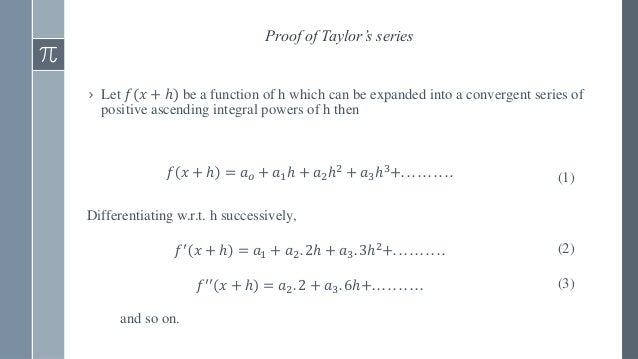


Power Series Taylor S And Maclaurin S Series



Binomial Theorem Properties Terms In Binomial Expansion Examples Pdf
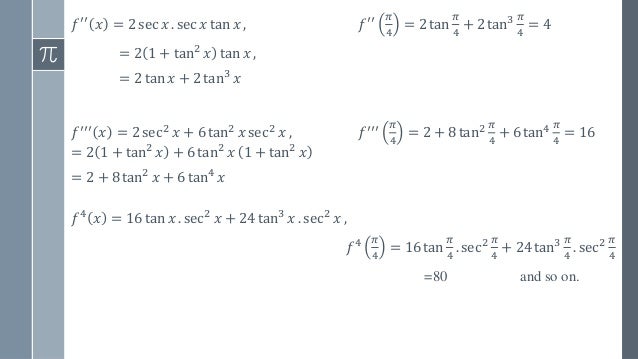


Power Series Taylor S And Maclaurin S Series



What Is The Correct Radius Of Convergence For Ln 1 X Mathematics Stack Exchange



Laurent Expansion An Overview Sciencedirect Topics


Taylor Series For Log X Physics Forums



How To Prove Expansion Of E X Or Power Series Of E X Proof Of Expansion Of E X Series Youtube


Find The Limit As X Goes To 0 Of 1 X 1 X E X Stumbling Robot



Taylor Series Wikipedia



Expand Log Sinx In Powers Of X 2 By Taylor S Theorem Youtube



Maclaurin Series For Ln 1 X How To Steps Video Lesson Transcript Study Com



Expansion Of Function Around Point Using Log X 1 X X 2 2 Mathematics Stack Exchange



Taylor Series Expansions Of Logarimathic Functions



Find Expansion Of Log 1 Tanx Youtube


Taylor Series For Log X Physics Forums


How To Expand Log 1 Log 1 X In Powers Of X As Far As X 4 Quora



Taylor Series Wikipedia



How Can We Compute The Maclaurin Series Of Math Sinh 1 X Math Quora



Natural Logarithm Wikipedia



Maclaurin Expansion Of Ex The Infinite Series Module



Prove The Limit As X Tends To 0 Of Log 1 X X Is 1 Brainly In
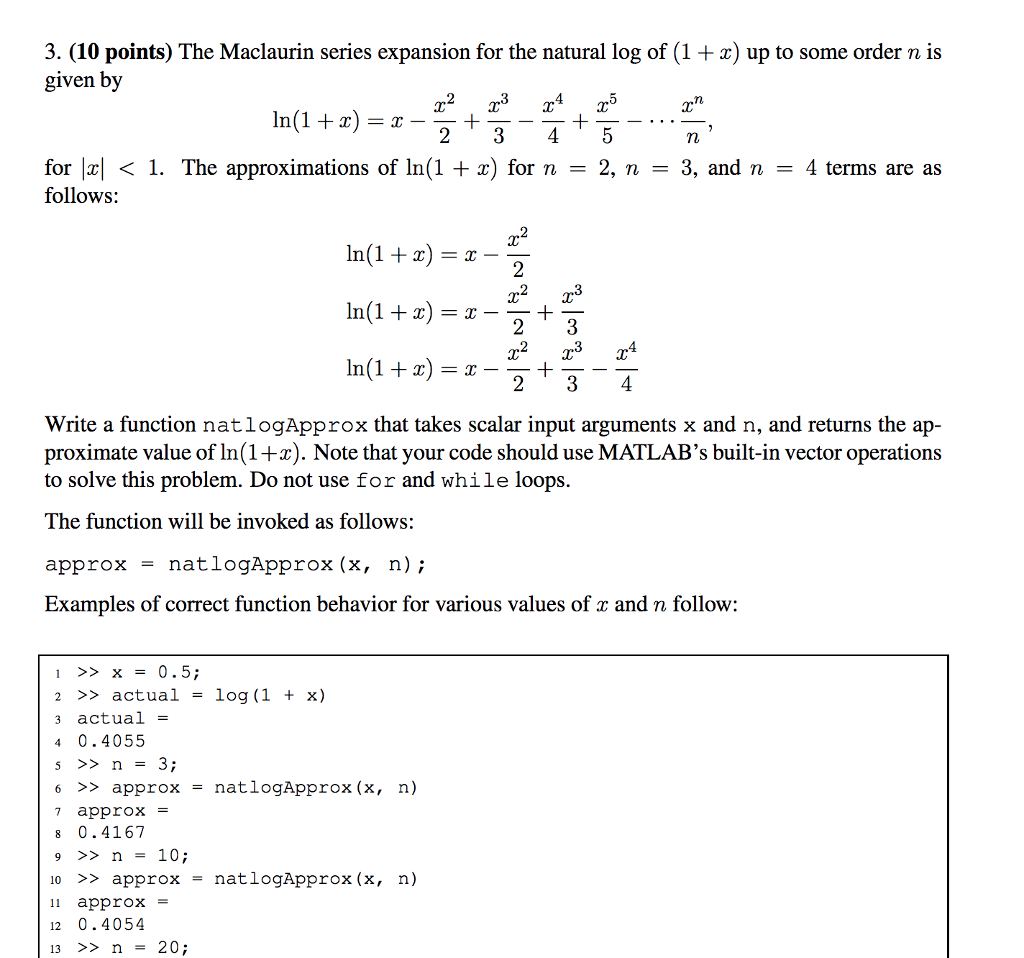


Solved The Maclaurin Series Expansion For The Natural Log Chegg Com



Is Log N 8 N Log N Stack Overflow



Maclaurin Series For Ln 1 X Youtube
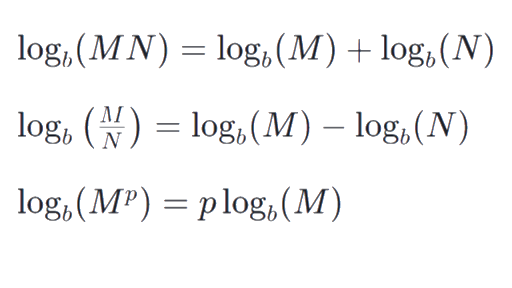


Log Rules Justifying The Logarithm Properties Article Khan Academy


What Is The Taylor Series Expansion Of Math E X Math About Zero Quora


Find The Limit As X Goes To 1 Of 1 Log X 1 X 1 Stumbling Robot



Natural Logarithm Wikipedia



Taylor Polynomial Remainder Part 1 Video Khan Academy



Basel Problem Wikipedia



Taylor Series Wikipedia



Expansion Of Log 1 X Maclaurin Series Youtube


Test The Improper Integral Log X 1 X For Convergence Stumbling Robot


コメント
コメントを投稿